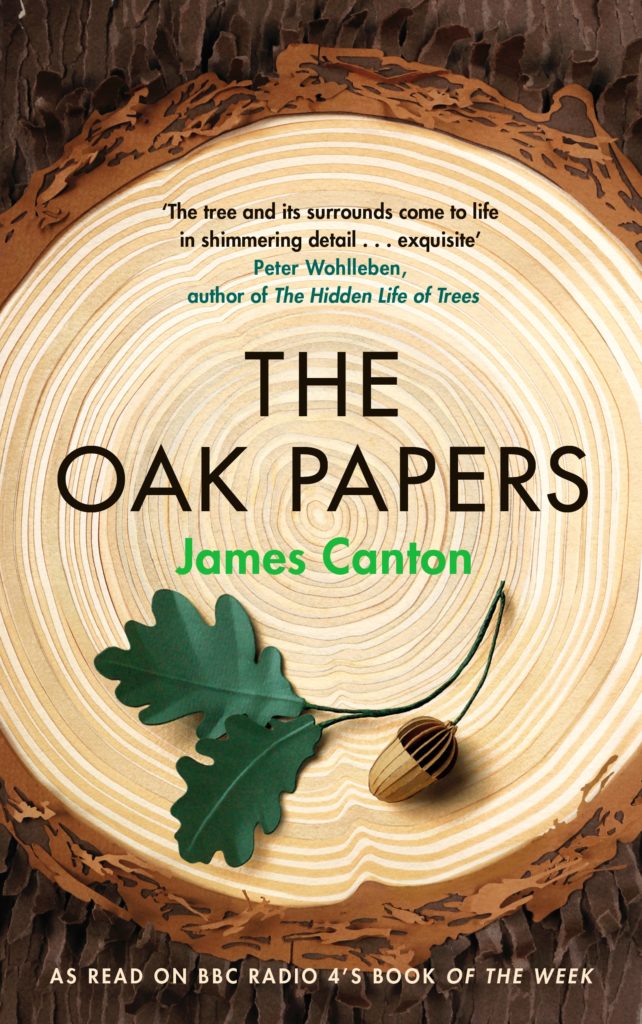An extract from James Canton’s homage to the oak tree — and its important role in our landscape and lives — which was recently published by Canongate.

Some five years ago, I sought solace from the ways of the world by stepping into the embrace of an ancient oak tree. It is a venerable oak tree, 800 years old, living on the edge of a wood on a small country estate a few miles from my house. From the first meeting, there grew a strange sense of attachment I did not consciously recognise until I later began to realise the significance that trees, and oak trees especially, can have in our lives. To begin with, I went there for the gentle comfort sitting beside that grand oak offered. I could walk away from my work as a teacher, from my life and responsibilities, and place myself in a world that was something close to Eden. I could go beyond my world into that of the oak. I felt calm descend. Once there I wanted only to watch the comings and goings of the birds, the bees and the rest of the creatures that formed the ecosystem that existed around and about and within that ancient oak tree. I felt a peace envelop me every time I stepped onto the country estate where the oak tree lived. Over the months that followed, I began to visit the oak rather as one might visit a friend.
I became better acquainted with it. I got to know the distinctive aspects of the tree and the creatures which lived within its realm. I sat beside the oak tree in all weathers and all seasons, at all times of day and night, until I knew that oak like a member of my family.
With the passing of the years, I can now look back and see what happened to me. There was another reason why I sought the embrace of the canopy of the oak. At the time my relationship with my long-time partner had fractured and begun to break down. She and I had started to live separate lives. From somewhere the notion of spending time beside the Honywood Oak came over me. I cannot say now if it was derived from a desire to avoid home or from a need to find some solitude. In truth, it was no doubt partly both.
Wherever oak trees grow around the globe, people have developed a connection to them. Throughout human history particular oaks have been favoured – for their setting, for their age and size. Ancient oaks have always been special. People collect beneath their boughs. They may gather there as a place of significance within the landscape or merely as somewhere to shelter. Whereas we humans are creatures of movement, oaks are static beings. They do not shift. They are born and they die on the same patch of earth. It is that surefootedness that is so appealing. Ancient oaks hold a powerful sense of longevity. The sense of security, the sense of attachment to a place across time, enchants us. We are drawn to old oaks. You can stand beneath a grand oak and know that your more distant ancestors did so too. Oaks hold onto the memories of earlier generations. By touching the skin of the oak it is possible to feel some tentative trace of those that have gone before.
Human beings and oaks have lived beside one another as neighbours since the earliest times and we continue to do so. We no longer need the bodies of oak trees to build our homes, or to fuel our fires, and we no longer need acorns to sustain us through hard years and meagre harvests. Yet on some level we still lean on oak trees. In ways we do not fully understand, we need them.
*
The Oak Papers is out now, and available from your local independent book shop.
Catch up with the book’s stint as Radio 4’s Book of the Week here.